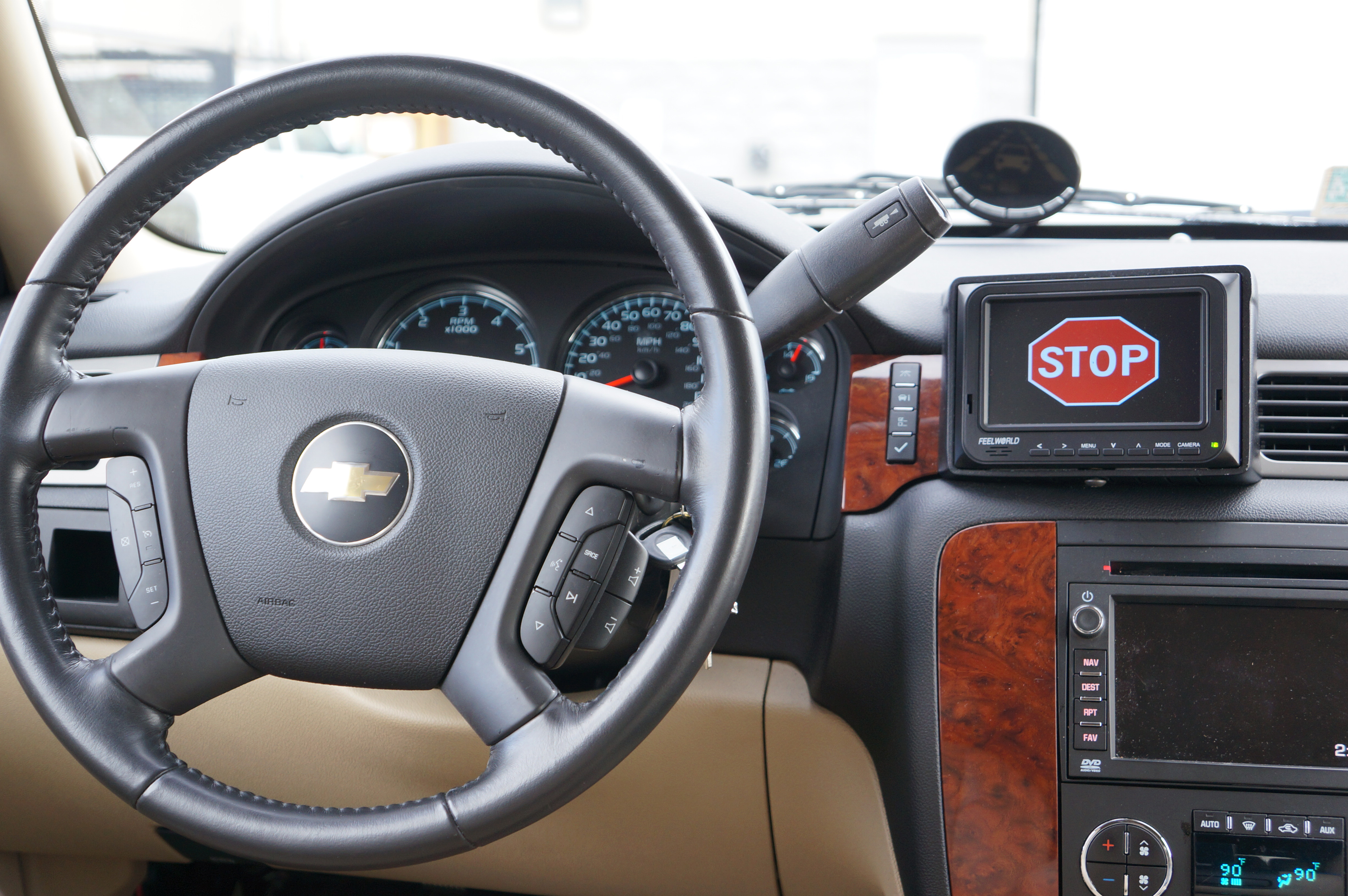Transportation Institute works on study that could display traffic signs inside vehicles

It’s an act as automatic as turning the ignition: You come to a stop sign at a traffic intersection and bring your car to a halt before proceeding. Even if no other vehicles are around, you stop.
Often -- not always -- but often, this is a waste of time and gas. Fuel means money, and pollution.
But what if you knew ahead of time that no other car was near the intersection? Why the need to stop?
Researchers at the Virginia Tech Transportation Institute are in the early stages of a novel idea to move stop and yield signs, among other posted traffic, from the side of the road into the car itself, where a dashboard screen will automatically alert the driver of what actions to take, if any. The new angle: If no other car is present at the intersection, the will driver would be allowed to pass through and go on.
“The idea is there would be no physical stop or yield signs on the side of the road, but they would be inside the vehicle,” said Alexandria Noble of Newark, Delaware, a master’s student with the Virginia Tech Charles E. Via Jr. Department of Civil and Environmental Engineering, who is working with the Virginia Tech Transportation Institute, located just a few miles off the main campus.
Noble is spearheading the proof of concept adaptive stop-yield study with funding from the U.S. Department of Transportation and under direction of her adviser and project manager, Thomas A. Dingus, the institute’s director and an endowed professor of civil and environmental engineering at Virginia Tech. Noble is the first student in the newly launched Human Factors Transportation Safety Graduate Certificate Program, spearheaded by the transportation institute.
The project directly ties into the institute’s growing endeavor into connected-vehicle technology, a futuristic intranet-like grid system where “smart” cars and other vehicles will be able to communicate not only with each other but surrounding infrastructure to help prevent auto crashes and ease congestion.
“This is part of our initial efforts to integrate more revolutionary safety concepts with the growing field of connected-vehicle technology,” said Dingus. “While a relatively new area in the transportation realm, adaptive stop/yield signs have the potential to be a long-term solution for not only minimizing traffic problems experienced on increasingly congested roadways, they may also help mitigate negative environmental impacts.”
Noble recently finished a 17-week closed experiment at the Virginia Smart Road, directly behind the institute’s main base, involving dozens of local test participants, aged 18-25 and then older than 50, in cars outfitted with small GPS-like dashboard screens that would alert the driver with a flashing display to either stop or yield, and proceed through the intersection. Additional cars at intersections during the tests were driven by institute researchers trained to safely interact with the participant driving test vehicles.
Test subjects were filmed by cameras set up inside the institute-provided test vehicle, capturing images of the motorist’s upper body, line of sight, the dashboard, and the vehicle itself. Also part of the test, according to Noble: Scenarios where the automated sign technology was allowed to fail, leaving the test subject to act on their own accord.
“This study was set up to take place in a future where all static traffic control infrastructure, such as stop signs and yield signs, are no longer needed, and you have an adaptable in-vehicle display telling you when you need to stop and when a stop is unnecessary,” said Noble.
“The deployment of this technology in the real world would involve a whole re-working of the transportation system and is not likely to be deployed in the near future. However, this study will be useful in developing future connected-vehicle applications in a general sense and demonstrates that this is possible and how well it is received by naive drivers with minimal training on the subject.”
The project is only beginning. It has not been tested in real traffic environments. Hours of footage of tests subjects will be reviewed and compared to that of drivers filmed during naturalistic conditions in separate institute studies. As well, the technology could change as the concept develops: Imagine augmented-reality images appearing on a windshield, replacing dashboard screens. Fail-safe measures also would have to be in place. As of yet, intersections involving physical signs have been tested, not traffic lights.
Reasons for bringing traffic signage and warnings directly into cars are many fold. Roadside stop and yield signs are often overlooked or outright ignored. Physical signs also are costly: They must be kept up, replaced when damaged, and there’s always the danger of a sign being stolen or covered by tree growth. Other traffic signs also only have limited use. Take the “Bridge Freezes Before Road” sign. Such signs may be needed during most winter days in, say, Rhode Island, but during summer? Not likely. And in a warm state such as Alabama, even during winter? Rarely. Adaptive in-car warnings would be better for the driver, as and when needed, according to researchers.

Dashboards one day could display traffic signs
During the Adaptive Stop Yield Study, participants saw a stop sign display on their dashboard as part of traffic instruction, as well as a yield sign. The study seeks to bring traffic signs inside cars that use connected vehicle technology, rather than relying on physical posts signs that can be damaged, aged, or removed. The study, now in a proof of concept, was funded by the U.S. Department of Transportation.






